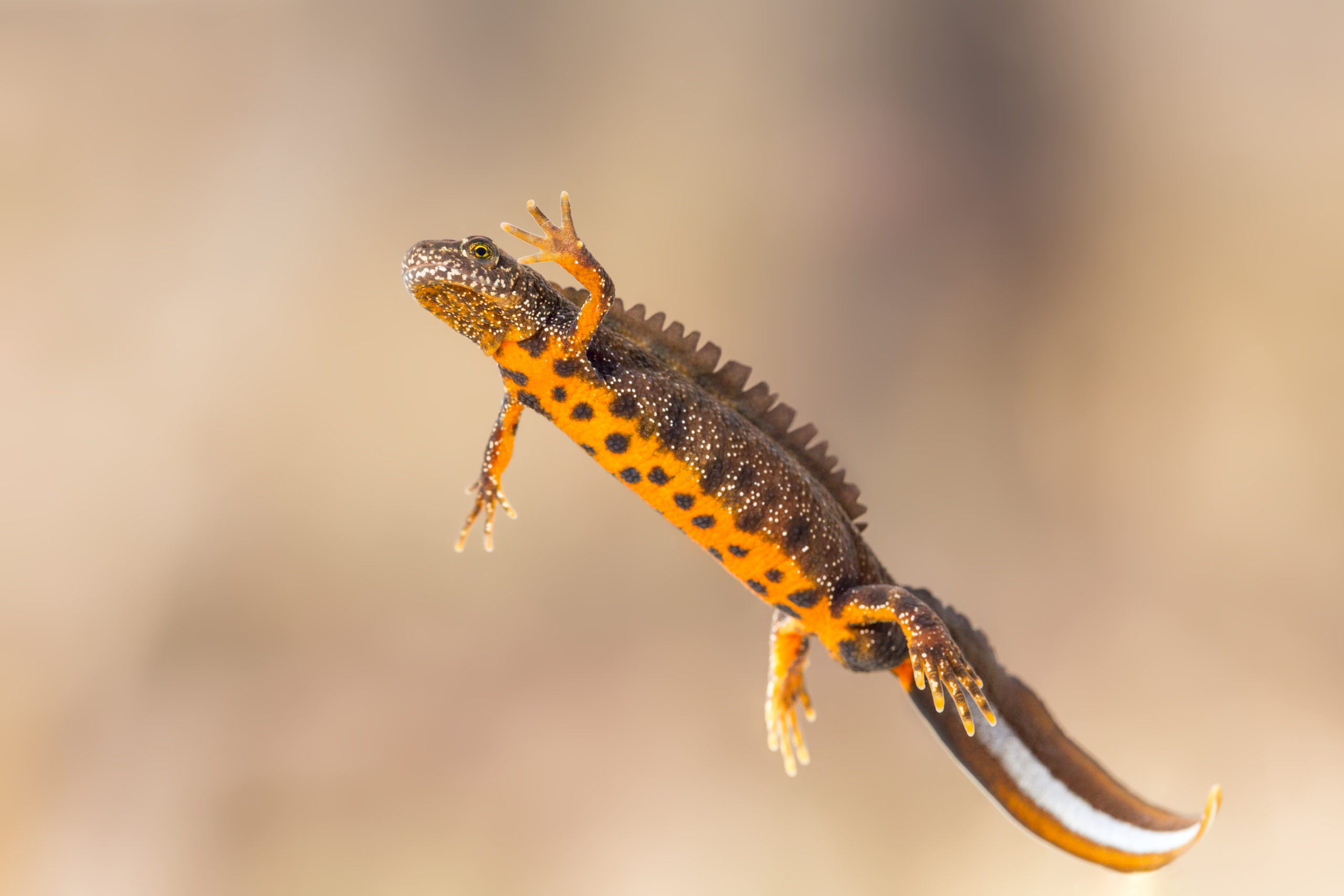Wildlife expert Nick Acheson introduces some of our feathered superstars to listen out for this spring
When we look at wildlife, anthropomorphising is commonly discouraged. ‘If you project human feelings onto animals,’ we’re told, ‘you won’t observe what is really going on.’ But if, like me, you see personalities in wild animals all around you, I have good news for you: when it comes to learning birdsong, anthropomorphism is absolutely the way forward. For learning birdsong is not a matter of factual description; it is a matter of feeling. What does the sound remind you of or make you feel? Once you have connected with that feeling, you will never forget the bird behind the song.
Some hard, scientific facts are necessary, however, in order to understand what birds are up to in spring and why they sing. From a purely physiological point of view, male birds sing because increased day-length and rising temperature make their hormones surge (in the UK, essentially all spring-singing birds are males). Their songs have two functions, both related to the second inexorable Darwinian driver of evolution: sexual selection. Male birds sing in order to showcase their genetic wares, to convince females to mate with them and raise chicks with them this season.
The second purpose of birdsong is perhaps less immediately obvious. If you look at human homes, it’s apparent we like clear boundaries. Around almost every garden there’s a wall, a hedge or a fence: a strong message to outsiders to keep out. In spring birds need enough space in which to find food for their chicks, and this space is referred to as a territory. Since birds are unable to build fences, they define their territories by singing. A singing bird, no matter how melodic or beautiful he sounds, is effectively telling neighbours of the same species to ‘back off and talk to the wing.’
Happily for us, many beautiful birds, with equally beautiful songs, are common in UK gardens and parks. And spring, as birds claim territory in which to breed, is the finest time to get to grips with them.
Song thrush. Among the easiest birdsongs to master in UK parks and gardens is that of the song thrush. [At this point I must warn you: dangerous levels of anthropomorphism lie ahead.] To me the song thrush is not tuneful in the slightest. I think of the song thrush more as a one trick pony. He shouts the same shrill phrase half a dozen times, before moving to another shrill phrase, and then another. The effect is something like, ‘Vince, Vince, Vince, Vince, Jennifer, Jennifer, Jennifer, Hannah, Hannah, Hannah, Hannah.’ The song thrush, once learned, is unmistakable.
Among the easiest birdsongs to master in UK parks and gardens is that of the song thrush. [At this point I must warn you: dangerous levels of anthropomorphism lie ahead.] To me the song thrush is not tuneful in the slightest. I think of the song thrush more as a one trick pony. He shouts the same shrill phrase half a dozen times, before moving to another shrill phrase, and then another. The effect is something like, ‘Vince, Vince, Vince, Vince, Jennifer, Jennifer, Jennifer, Hannah, Hannah, Hannah, Hannah.’ The song thrush, once learned, is unmistakable.
Take a listen…
Blackbird Much more confusing are the very common blackbird and the rather less familiar mistle thrush. Blackbird song is the sound of cucumber sandwiches on a vicarage lawn in June. It can still be heard well into summer because blackbirds will attempt to breed more than once each season. Blackbird song is rich and languid but, to my ear, curiously angular. It rocks from one note to the next and, in particular, stops abruptly, often with a sharp note, giving the impression the bird has been grabbed by the neck.
Take a listen…
Mistle thrush This finale is critical in distinguishing the blackbird from the similar, though much less often heard, mistle thrush. Mistle thrushes usually begin to sing several weeks before blackbirds (so next spring catch them in February) and often sing from very tall trees in open areas of common land or parkland. Their song is fluty and beautiful, like the blackbird’s, though it is rounder and to me it has a Wagnerian grandeur. Unlike the blackbird’s, mistle thrush song fades at the end, as though the songster were becoming absent-minded.
Take a listen…
Robin So much for thrushes. The robin, which is distantly related, is among the greatest of our garden singers. People often tell me they think robin song sounds like blackcap or wren song. I have no idea how they could think that. Yes, wrens, blackcaps and robins sing from the same dense garden bushes or neglected corners of parks, and, yes, they produce similar notes on the scale, but their deliveries — their personalities — could not be more different. The robin appeals to me because his tone is wholly melancholy. His song begins with a long, sad horizontal note, like water slipping over a flat rock, before tumbling into an even sadder trickle, as the water flows downhill over a bed of pebbles. The robin sings with a tone of introspection and understated tragedy. And I love him.
Take a listen…
Wren The wren, by contrast, is a bossy little number, full of strident energy and confidence. His song is loud, fast, varied and given to virtuoso trills, putting me in mind of the music of Rossini. A wren will almost always throw a harsh, percussive trill somewhere into his song. This is a convenient signpost for the birdsong beginner.
Take a listen…
Blackcap Blackcaps quite simply sound happy. They have the same musicality as blackbirds, but their song is faster and more varied, with a delicious chocolatey quality. Listen carefully and you will hear that a blackcap’s song begins with a quiet, scratchy recitative, before a glorious moment of release when he busts into his untrammelled romantic aria. (Those who have already mastered level one birdsong, may find this change in tone useful when distinguishing blackcaps from garden warblers. The rather scarcer garden warbler maintains the same intensity throughout his song and sounds, to me, like a blackcap in a jar of pebbles).
Take a listen…
Dunnock I always struggle to describe a dunnock’s song. The lovely, understated dunnock is one of our most familiar birds, forever fidgeting under the feeders, but I find his song evades description. It is high-pitched, quite short and very twiddly. It is also rather fast, with the nervous edge of a diligent child running because she fears being late. Happily, dunnocks usually sing from exposed perches, so I suggest you find one yourself and listen to what his song has to say to you.
Take a listen…
Blue tit Tits are also very commonly heard in our gardens and readily nest where we provide adequate boxes. Blue tit song is easy. It has a lovely silvery tone, as musical as any bird’s, but it is what the blue tit says which gives him away. You’ll perhaps have heard of the rapper Sean Combs. Early in his career he went by the stage name Puff Daddy. Later he changed his name to P. Diddy and this is precisely what a blue tit says. In his bright, cheery voice he repeats, ‘P. P. P. P. Diddy, P. Diddy Diddy Diddy.’ Believe me, he really does.
Take a listen…
Great tit The great tit, as beautiful as he is, is the politician of the birdsong world. He announces everything he says with tremendous conviction, demanding that you listen. His tone is brassy and bold, but he never says anything at all of any interest. The classic song of the great tit is a bright rocking backwards and forwards between two notes. However, there are many variations on this theme: sometimes one note, sometimes three, sometimes scratchy, sometimes not. Indeed an old adage says that if you can’t identify a birdsong it is usually a great tit.
Take a listen…
Coal tit A coal tit’s song is similar to a great tit’s, as it too rocks backwards and forwards between two notes, but a coal tit is wholly different in attitude. Whereas a great tit is all bluster, a coal tit sounds unsure of himself, and lisping in tone, and typically he throws the stress onto his longer second note. To me a coal tit says something like, ‘Itsy witsy teeny weeny.’ A coal tit will also, rather helpfully, often sing from a conifer, or from a dense stand of ivy.
Take a listen…
Chiffchaff A third singer also rocks between two notes: the drab little chiffchaff. Not often found in gardens, though abundant in scrubby woodland on commons and along rivers, the chiffchaff, like the blackcap, is a migrant from the Mediterranean. He arrives in the middle of March and immediately begins to sing. Unlike the confident great tit or the worried coal tit, the chiffchaff’s two-note song is lilting, drunken even, seeming to stumble between the notes. The effect is to render the sensitive listener a little seasick. In between renditions of his main song, the chiffchaff gives a characteristic series of very quiet, engine-idling chirps.
Take a listen…
Chaffinch So we come at last to finches. There are two common finches in UK gardens, though a third, the gorgeous goldfinch, has colonised parks and gardens in recent years too. The chaffinch is best known of all and his song cannot be mistaken. Many say chaffinch song sounds like a fast bowler, coming in to bowl. To me a chaffinch sounds like Tom Daley standing at the end of the diving board. For the first few hesitant notes, he loses his nerve and is suddenly unable to dive. Next his trainer jabs him in the back and he falls, arms and legs flailing as he goes. (For insurance purposes: don’t try that at home folks.) Finally, he hits the water with a giant, reverberating splash. Voilà: chaffinch song.
Take a listen…
Greenfinch As for the greenfinch, his song, also often heard from a conifer, has two, entirely different parts. It begins with a harsh ‘bzheeeee,’ sounding much as though he were pinching his nose. This is followed almost immediately by a beautiful liquid trill. A greenfinch has an even better trick up his moss-green sleeve, as, when the mood grabs him, he launches from the top of his cypress hedge into a wonderful song-flight, describing musical circles in the sky like a chunky swallow.
Take a listen…
Discover songbirds for yourself
There are so many more garden birds I could mention — the goldcrests, collared doves, woodpigeons, house sparrows, great spotted woodpeckers, house martins and swifts which all make their homes alongside us — but, if you are a birdsong beginner, less is definitely more. At the start it doesn’t even matter whether you know who is making which sound, as long as you are distinguishing and then recognising them.
It also matters not a jot if you can’t see how my descriptions fit the birds in question. I would be positively thrilled to hear you call me an idiot. ‘No! A chaffinch sounds nothing like Tom Daley. He sounds like dominoes toppling.’ For in the moment you disagree with my way of describing a bird’s song, you have made your own way. You have made a hook in your mind on which you will hang that bird’s song for the rest of your life. And for the rest of your life the knowledge of that song will bring you joy.


